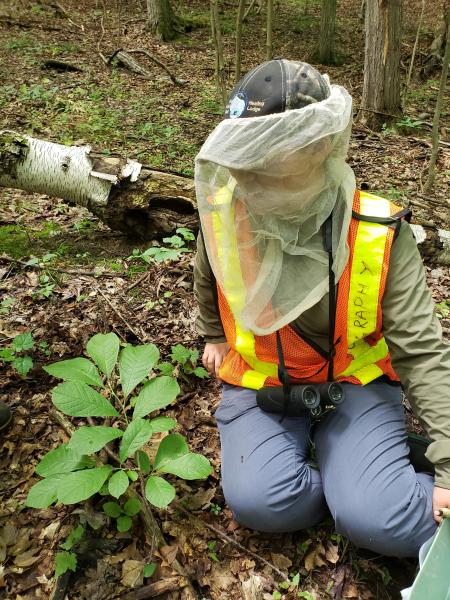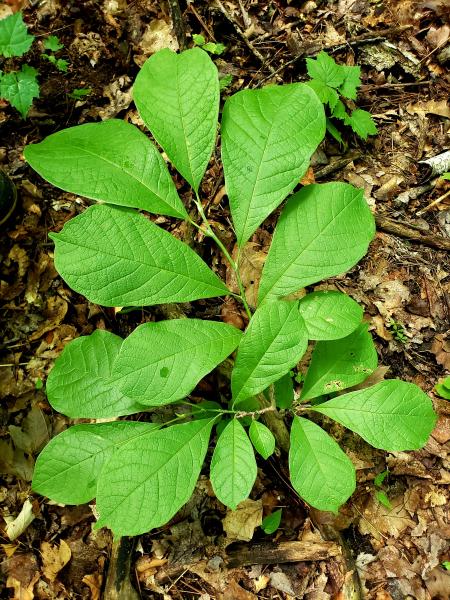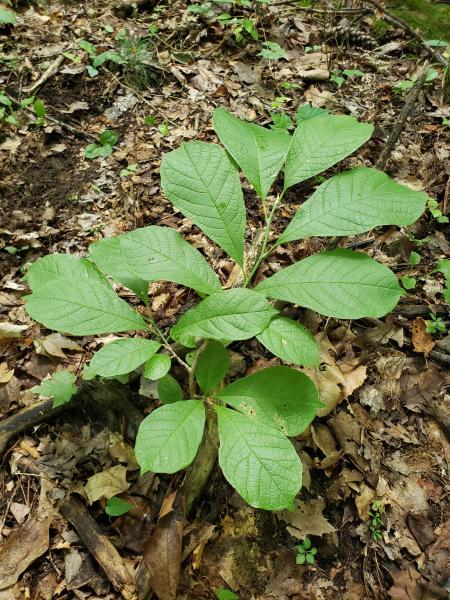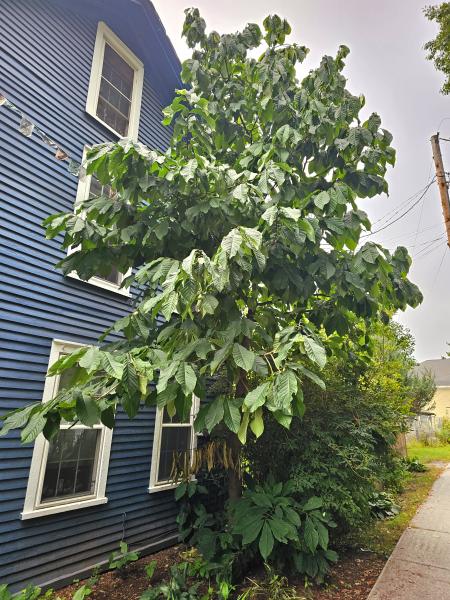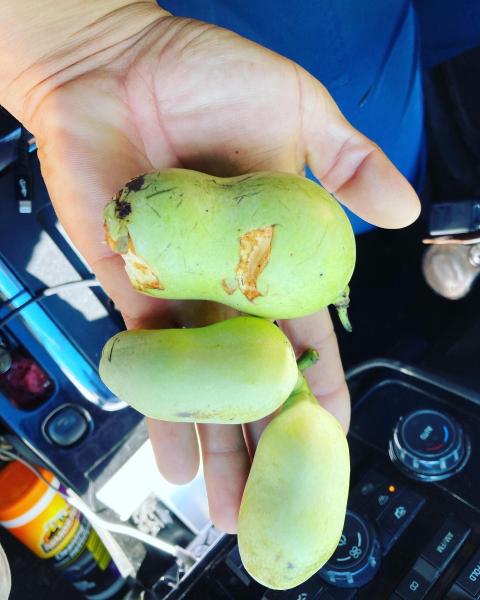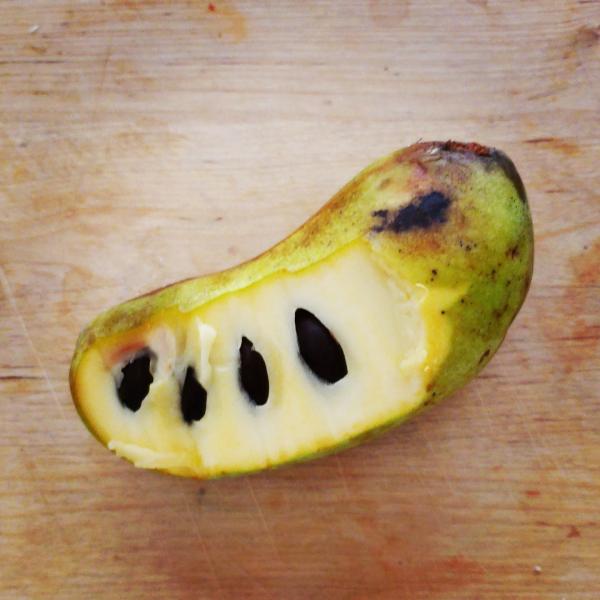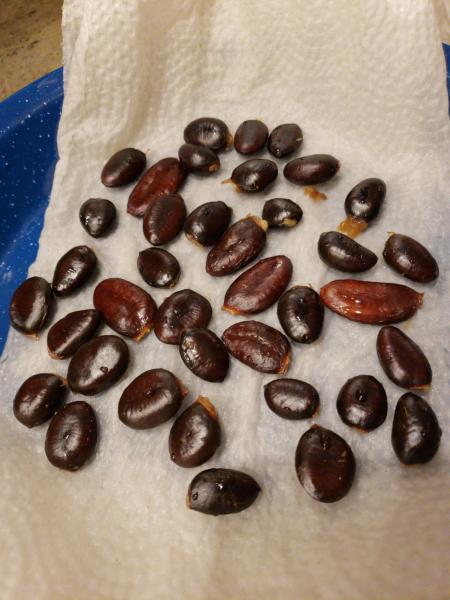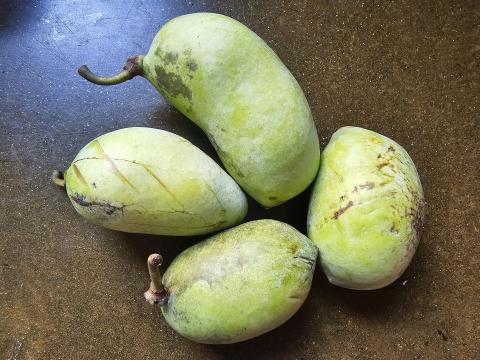
Names and Their Meanings
Pawpaw - Asimina triloba
Pawpaw
Description
Native to North America, Asimina triloba is the northernmost and only temperate member of the Annonaceae or soursop family, joining other beloved fruits like cherimoya, guanabana, custard apple, and the elegant ylang ylang. It is a small to medium sized deciduous tree or shrub, with dark reddish-purple flowers that ripen to yellowish green to brown fruits for a very brief period in September or early October. Pawpaw leaves are simple, alternate on the stem and branches, spirally arranged with an obovate shaped leaf that has a drip-tip. The fruit of the pawpaw resembles a mango in its shape and the color of its within its buttery yellow flesh, and papaya in that it has multiple black seeds in the flesh of the fruit. Fruits weigh the branches down and often fully ripen once they fall to the ground; its skin remains green or with brown blotches when ripe. Bark of the small tree is smooth and light gray-to-brown, sometimes with gray spots, and small indentations/bumps throughout, sometimes with light vertical fissures between. The bark, leaves, and flowers can all have a strong odor when bruised, and with the flower’s brown color and strong smell, this is indicative of a feature that attracts pollinators. Pawpaw, like other species, are moving North in their range with climate change, while persisting in the south. Pawpaw grows in woodlands with mixed hardwood leaf litter on the forest floor, in partially or deeply- shaded understory, sub-canopy places.
Conservation Status
S3 (Vulnerable) in Ontario, in New York State, Pawpaw is listed as S1 (Imperilled).
Uses
There is a current resurgence among Indigenous communities of pawpaw stewardship and usage, as it has been rediscovered as an Indigenous food that is delicious and nutritious, and essential to forest biodiversity in Carolinian forest landscapes. With a sweet and custard-taste, this Indigenous fruit is rich in magnesium, iron, Vitamins C , B, and A, potassium, and even contains protein. Similar to papaya, pawpaw can also have laxative effects and expel intestinal worms and parasites. Pawpaw fruits are sensitive and have a short window for becoming ripe, which has made them challenging to market, and is perhaps among the reasons that they have not been marketed more as an “exotic” native fruit. Harvest pawpaw in the summer and early fall, when you smell their ripeness, either from off the ground, or when the fruits become heavy and exude a smell of ripeness. Fruits will only last for 2 to 3 days at room temperature, but slightly longer refrigerated. The inner bark is also useful as a source of fiber for making ropes, fishing nets, and mats, while the hardwood is good for carving and possibly basket-making.
According to the Decolonial Atlas, the Powhatan word for pawpaw is asimin, with similar cognates in Myaamia (Miami), ahsiimini, and Shawnee, hahsiimi. This leads us to infer that the Latin name Asimina derives from the Powhatan name for the plant, showing that the botanists who named the plant learned about it from Indigenous people. The French name (assimine) derives from the Latin and Algonquian names for the plant.

